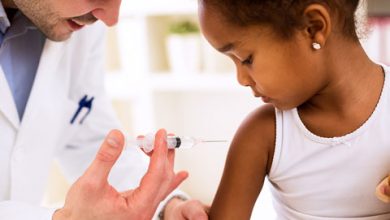Southern State on High Alert as Whooping Cough Infections Spike

Whooping cough, medically known as pertussis, is making a troubling resurgence in one southern U.S. state, prompting health authorities to issue urgent alerts. Once thought to be largely under control thanks to effective vaccines, this highly contagious respiratory disease is reappearing in clusters—and the current spike has caught the attention of medical professionals, parents, schools, and public health officials nationwide.
As infection numbers climb, experts are warning residents to take the threat seriously. What makes the current situation especially concerning is that cases are rising across multiple age groups, from infants and young children to teenagers and even vaccinated adults. Understanding what is driving this sudden surge—and how to prevent further spread—is crucial for anyone living in or traveling through the affected region.
The causes behind the spike, symptoms to watch for, risk factors, preventive measures, and what public health agencies are doing to curb the outbreak.
Understanding Whooping Cough: Why It’s a Persistent Threat
Whooping cough is caused by the bacterium Bordetella pertussis, which infects the airways and leads to violent coughing fits. It is notorious for its ability to spread quickly through respiratory droplets—especially in crowded environments like schools, daycare centers, and public transportation.
Even with modern medicine, pertussis remains a major public health concern for three key reasons:
1. Waning Immunity Over Time
Immunity from the pertussis vaccine tends to diminish after several years. This means that older children, teens, and adults can become susceptible again—even if they were fully vaccinated in early childhood.
2. High Contagiousness
Whooping cough is among the most easily transmissible respiratory diseases. One infected person can spread the bacteria to up to 17 others, particularly in enclosed indoor spaces.
3. Silent Spreaders
Many people, especially teens and adults, have mild symptoms and don’t realize they are infected. They may think it’s a common cough or seasonal cold, unknowingly releasing bacteria into public spaces.
These factors combine to create an environment where outbreaks can occur rapidly, particularly when vaccination rates dip or public awareness fades.
The Current Spike: What’s Happening in the Southern State?
Public health reports from the affected southern state reveal a dramatic rise in pertussis cases over the last three months. In some counties, infections have more than tripled compared to the same period last year.
Key trends in the outbreak:
1. Clusters in Schools
Elementary and middle schools are reporting significant clusters of infections. In some districts, classrooms have been temporarily closed for deep cleaning as a precaution.
2. Rising Cases Among Infants
Infants under one year old—who are too young to complete the full vaccination series—are particularly vulnerable. Several hospitalizations have already been confirmed, raising concerns among pediatricians.
3. Adult Cases Are Increasing
Adults, including parents and grandparents, make up a notable portion of the new cases. Health officials emphasize that adults can unknowingly transmit the infection to babies, who are at the highest risk of complications.
4. Healthcare Workers Affected
Some healthcare employees, particularly in emergency departments and pediatric units, have also tested positive. Hospitals are reinforcing mask policies and recommending booster shots for staff.
Why the Sudden Surge? Experts Highlight Several Factors
Public health experts believe a combination of social, biological, and environmental factors is driving the rapid increase in cases.
1. Declining Vaccination Rates
Over the past few years, vaccination rates for childhood immunizations have dropped in various regions of the United States. This southern state has seen particular declines in preschool and early elementary-age immunizations, creating pockets of vulnerability.
2. Post-Pandemic Immunity Gaps
During the COVID-19 pandemic, many routine medical visits—including scheduled vaccines—were postponed. This created immunity gaps in children who missed recommended doses.
3. Increased Mobility and Social Interaction
With travel, gatherings, and school activities fully resumed, respiratory diseases have more opportunities to spread quickly.
4. Waning Booster Awareness
Many adults are unaware that they need a Tdap booster every 10 years—or sooner if they are around newborns. Without boosted immunity, adults can become carriers.
5. Seasonal Influences
Respiratory infections generally rise during cooler months when people spend more time indoors, providing ideal conditions for pertussis transmission.
Recognizing Whooping Cough: Symptoms People Often Miss
Whooping cough unfolds in stages, often resembling a simple cold at first. This early phase makes it easy to mistake for allergies or a mild viral infection.
Early Symptoms (First 1–2 Weeks):
- Runny nose
- Low-grade fever
- Mild cough
- Occasional congestion
- Fatigue
These subtle signs often lead people to continue their daily activities, contributing to unintentional spread.
Severe Stage Symptoms:
After one to two weeks, the cough becomes more intense and frequent.
Typical symptoms include:
- Violent coughing fits lasting 20–30 seconds
- A high-pitched “whoop” sound during inhalation (especially in children)
- Vomiting after coughing
- Difficulty breathing or catching breath
- Bluish skin in infants due to lack of oxygen
Infants may not have the “whoop” sound but instead experience:
- Apnea (pauses in breathing)
- Poor feeding
- Lethargy
Parents are urged to seek emergency medical attention immediately if these symptoms appear.
Symptoms in Adults May Be Subtle
Adults often present with:
- Persistent dry cough lasting weeks
- Occasional coughing spasms but no “whoop”
- Mild fever or none at all
Because symptoms can be mild, adults can unintentionally spread the infection to high-risk individuals.
Why Infants Face the Greatest Danger
Infants are the group at the highest risk of severe complications from whooping cough—including pneumonia, seizures, encephalopathy, and even death. Most hospitalizations and fatalities occur in babies under six months old.
Key reasons for their vulnerability include:
- Incomplete vaccination schedule
- Smaller airways
- Underdeveloped immune systems
- Inability to cough effectively
This is why vaccinating pregnant women, caregivers, and family members—known as “cocooning”—is so strongly recommended.
How Health Officials Are Responding to the Outbreak
The southern state’s department of health has launched several measures to contain the spread:
1. Public Alerts and Press Briefings
Daily updates are being provided to inform residents about case counts, high-risk areas, and prevention strategies.
2. Free Vaccine Clinics
To encourage rapid community protection, temporary vaccination clinics have been set up at:
- Schools
- Churches
- Community centers
- Local health departments
Parents are being urged to catch up on missed childhood vaccinations.
3. School Notifications and Temporary Closures
Schools with multiple confirmed cases are:
- Notifying parents directly
- Recommending immediate medical evaluation for symptomatic children
- Instituting temporary class suspensions when necessary
4. Healthcare Worker Protocols
Hospitals and clinics are reinforcing:
- Mandatory mask policies
- Tdap booster requirements
- Isolation procedures for suspected cases
5. Contact Tracing
Local health workers are identifying and notifying individuals who have been exposed to confirmed cases, especially in school settings.
6. Public Education Campaigns
Campaigns are focusing on:
- Recognizing early symptoms
- Understanding the importance of vaccination
- Knowing when to seek medical care
The Role of Vaccination: Your Best Protection
Vaccines remain the most effective tool against whooping cough. Although immunity can wane, vaccination significantly reduces:
- The severity of symptoms
- The likelihood of hospitalization
- The risk of death
Recommended vaccination schedule:
For infants and children:
- DTaP at 2, 4, 6, and 15–18 months
- Booster at 4–6 years
For teens:
- Tdap booster at 11–12 years
For adults:
- Tdap booster every 10 years
- One booster during each pregnancy between 27–36 weeks
- Caregivers of infants should receive a booster if they haven’t had one recently
Why pregnant women need the Tdap vaccine
Vaccinating pregnant women protects infants after birth by providing maternal antibodies. This simple step dramatically decreases the risk of severe disease in newborns.
How to Prevent Whooping Cough During the Outbreak
Even with rising cases, individuals and families can take steps to protect themselves.
1. Stay Up to Date on Vaccinations
Ensure that:
- Children are current on their DTaP schedule
- Adults have received a recent Tdap booster
- Pregnant women receive Tdap during each pregnancy
2. Practice Good Respiratory Hygiene
- Cover your mouth when coughing
- Wear masks in high-risk settings
- Avoid close contact with sick individuals
3. Be Alert for Symptoms
If you or your child develops a persistent cough—especially one that worsens—contact your doctor promptly.
4. Isolate if Infected
Doctors typically prescribe antibiotics, but it may take several days to reduce contagiousness. Patients should remain home to avoid spreading bacteria.
5. Protect Infants
- Keep newborns away from large crowds
- Avoid close contact between infants and individuals with any signs of illness
- Ensure all caregivers and family members are vaccinated
Why Whooping Cough Continues to Resurface: A Look at the Bigger Picture
Even though vaccination rates have improved dramatically over the decades, pertussis hasn’t disappeared. Several long-term challenges contribute to periodic outbreaks:
1. Waning Vaccine Immunity
Unlike some vaccines that offer lifetime protection, pertussis immunity decreases after several years, requiring boosters to maintain protection.
2. Bacterial Evolution
Some researchers believe Bordetella pertussis may be evolving in ways that allow it to evade immune defenses.
3. Inconsistent Vaccine Coverage
Outbreaks often occur in areas where vaccination rates dip—even if the decline seems small.
4. Increased Testing and Awareness
More testing means more confirmed cases, making it easier to identify outbreaks quickly.
5. Close-Contact Environments
Schools, daycare centers, sports teams, and community gatherings can serve as hotspots for transmission.
The Public Health Message: Take the Spike Seriously
Health officials are urging the public not to dismiss this outbreak as just another seasonal illness. Whooping cough can have life-altering consequences—especially for babies and those with underlying health conditions.
Key messages include:
- Vaccination is essential
- Early detection saves lives
- Anyone can get whooping cough—even adults
- Protecting infants is a community responsibility
Conclusion: Staying Vigilant and Protecting Communities
The surge in whooping cough cases across this southern state is a clear reminder that vaccine-preventable diseases can return when immunity gaps widen. While the spike is concerning, it is also manageable with the right actions: timely vaccination, public awareness, symptom recognition, and coordinated medical response.
Residents are encouraged to stay informed, follow public health guidance, and ensure that their families are protected—especially the youngest and most vulnerable members of the community.
Public health experts continue to monitor the situation closely, but with collective effort, the state can bring the outbreak under control and prevent future surges. Staying vigilant today means building stronger, healthier communities for tomorrow.




